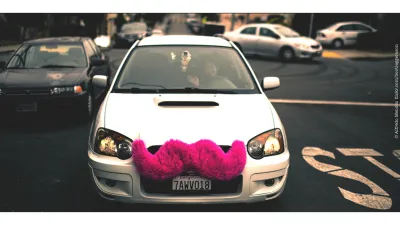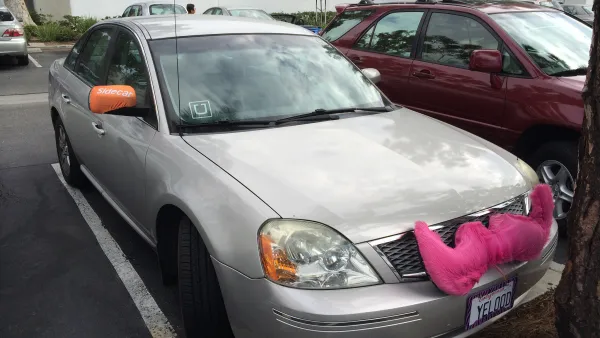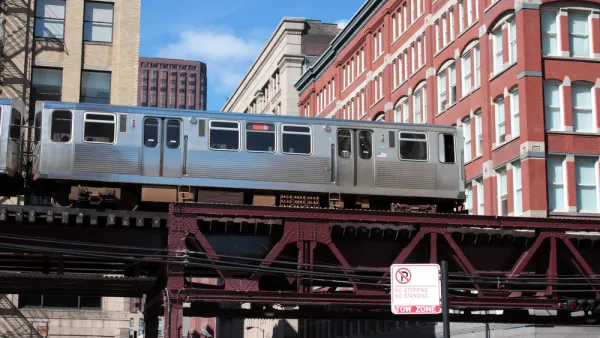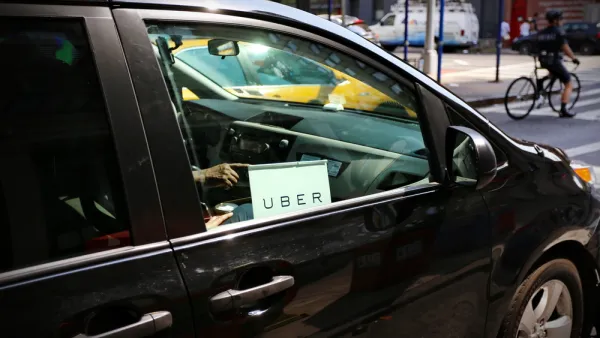According to a new report from the Center for American Progress, technology network companies like Uber and Lyft offer a unique opportunity for low-income users to connect with transit routes and on to greater economic opportunities.

Kevin DeGood, director of infrastructure policy at the Center for American Progress, and Andrew Schwartz, research associate on economic policy at the Center, have written a report exploring the potential of transportation network companies (TNCs) to provide social equity with access to mobility and all the opportunities that entails.
After establishing distance as the greatest barrier to access, DeGood and Schwartz note that TNCs "offer transit agencies the opportunity to experiment with different ways to overcome the last-mile barriers to connect people with the public transit system." The report that follows builds a case to subsidize the use of TNCs like Uber and Lyft for low-income users.
Historically, transit agencies have been unable to address these geographic gaps—especially because extending traditional fixed-route service into neighborhoods is cost prohibitive. Companies such as Uber and Lyft offer transit agencies a way to bridge last-mile gaps efficiently, allowing eligible residents to connect affordably to the public system.
The article describes the unique ability of the Technology platforms of TNCs to make subsidized connections to transit a reality before considering the Metropolitan Atlanta Rapid Transit Authority (MARTA) in the Atlanta region as a theoretical test case.
Angie Schmitt also picked up on the news of the report for Streetsblog USA. Schmitt concludes that it's "interesting to see some analysis of how ride-hail-to-transit subsidies for commuters might work, [but] it’s still hard to discern a concrete benefit compared to plain old bus and train service."
FULL STORY: Can New Transportation Technologies Improve Equity and Access to Opportunity?

Analysis: Cybertruck Fatality Rate Far Exceeds That of Ford Pinto
The Tesla Cybertruck was recalled seven times last year.

National Parks Layoffs Will Cause Communities to Lose Billions
Thousands of essential park workers were laid off this week, just before the busy spring break season.

Retro-silient?: America’s First “Eco-burb,” The Woodlands Turns 50
A master-planned community north of Houston offers lessons on green infrastructure and resilient design, but falls short of its founder’s lofty affordability and walkability goals.

Test News Post 1
This is a summary

Analysis: Cybertruck Fatality Rate Far Exceeds That of Ford Pinto
The Tesla Cybertruck was recalled seven times last year.

Test News Headline 46
Test for the image on the front page.
Urban Design for Planners 1: Software Tools
This six-course series explores essential urban design concepts using open source software and equips planners with the tools they need to participate fully in the urban design process.
Planning for Universal Design
Learn the tools for implementing Universal Design in planning regulations.
EMC Planning Group, Inc.
Planetizen
Planetizen
Mpact (formerly Rail~Volution)
Great Falls Development Authority, Inc.
HUDs Office of Policy Development and Research
NYU Wagner Graduate School of Public Service




























